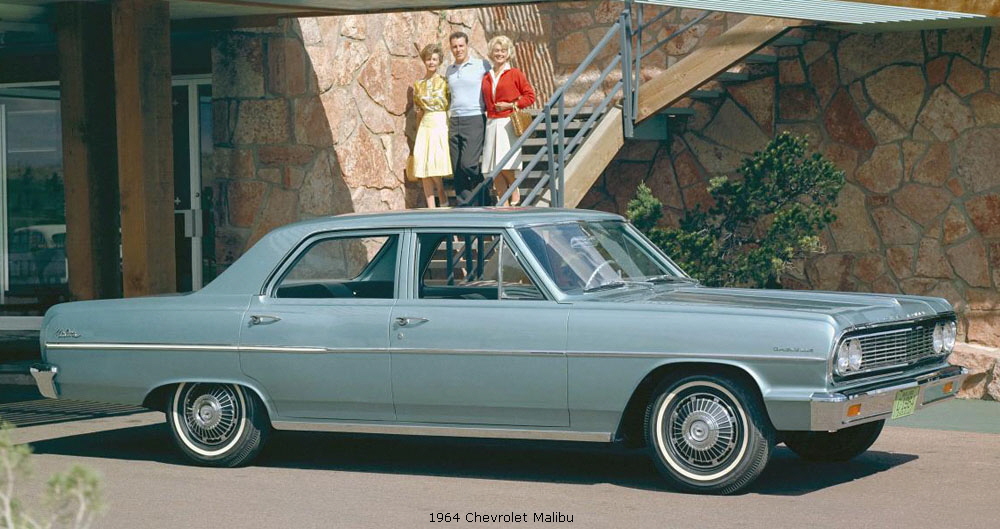
Chevrolet Malibu
In 1964, a gallon of gas cost 30 cents and a movie ticket cost $1.25. The Dow Jones Industrial Average closed the year at 874 and The Beatles made their historic appearance on the Ed Sullivan show. It was also the year Chevrolet introduced the Malibu.
Stylish for its day, Malibu made its mid-1960s debut as Chevrolet’s first “intermediate” car – and one of the first midsize cars in America. Before then, Chevrolet’s passenger car lineup consisted of a range of full-size models, headlined by Impala, along with the compact Chevy II (Nova), Corvair and Corvette.
Named for the Los Angeles-area enclave that was center of the beach culture in the 1960s, the Malibu was the top trim line for the intermediate platform, which also included the Chevelle as an entry-level model, and the El Camino truck. It was lauded for its robust, body-on-frame construction and responsive coil-spring front suspension.
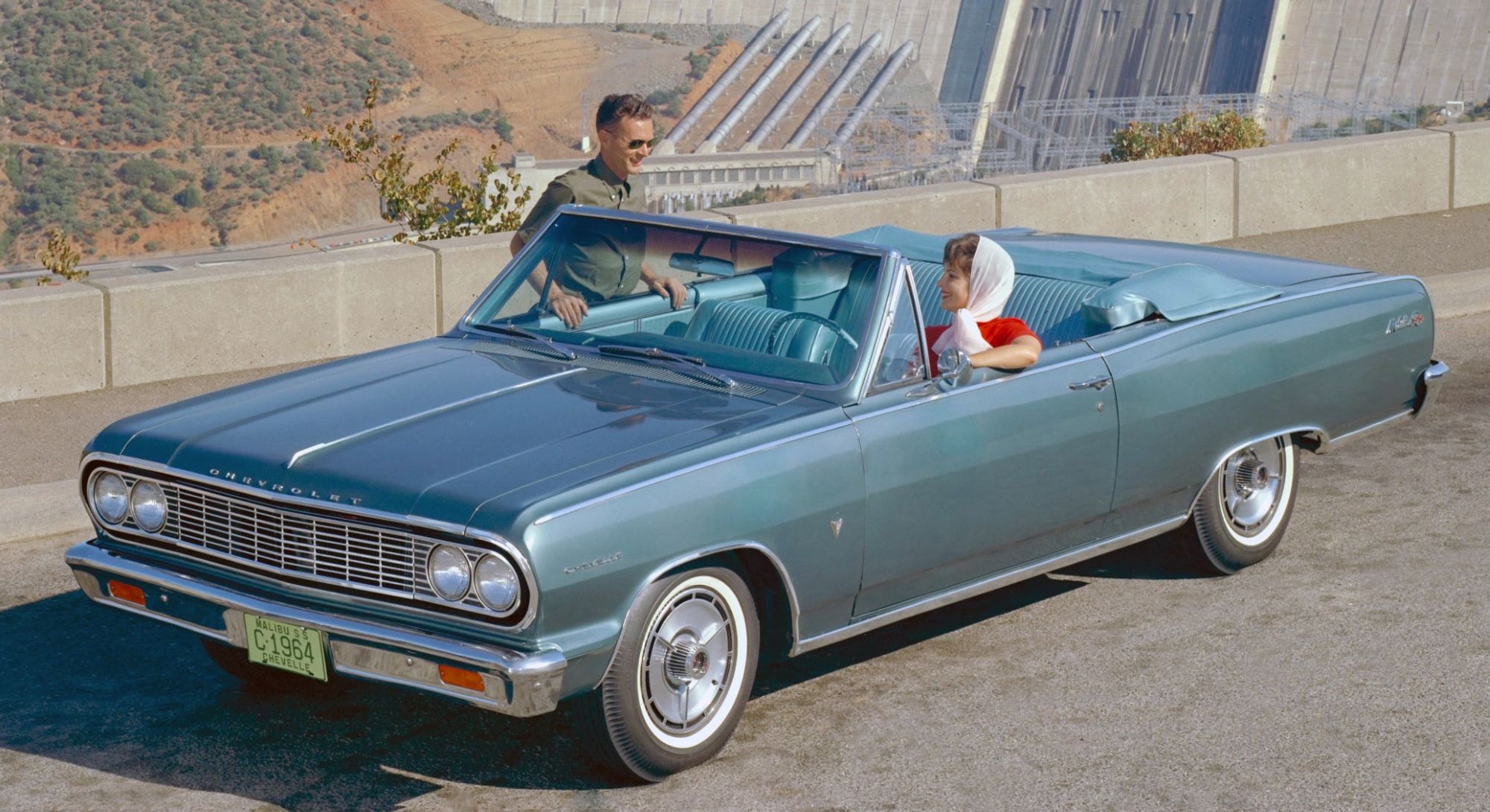
Generation 1 – 1964-1967
Although originally launched as premium sedan for families, the first Malibu was quickly caught up in the muscle car wars of the 1960s and soon after its introduction, the sporty Malibu SS was born. The Chevelle SS took the lead for Chevrolet’s muscle cars in 1966 and the Malibu continued as the premium model, tailored for the growing number of suburban customers who sought roominess yet efficiency for their long commutes everyday.
1964 Malibu Specifications
- Construction:………….body-on-frame
- Drivetrain layout:……..rear-wheel drive
- Wheelbase:……………115 in.
- Overall length:………..193.9 in.
- Overall width:…………74.6 in.
- Curb weight:…………..2870 lbs.
- Standard engine:……..3.2L inline-six
- Valvetrain:…………….cam-in-block with pushrods
- Fuel delivery:………….one single-barrel carburetor
- Horsepower:…………..120
- Transmission:………….3-speed manual (std.); 2-speed automatic (opt.)
- Brakes:…………………four-wheel drum
- Steering:……………….recirculating ball (non-assisted); power-assist (opt.)
- Wheel size:……………14 x 6.5-in. (std.)
- Air conditioning:………optional
- Infotainment:………….AM radio
- Safety:…………………optional safety belts
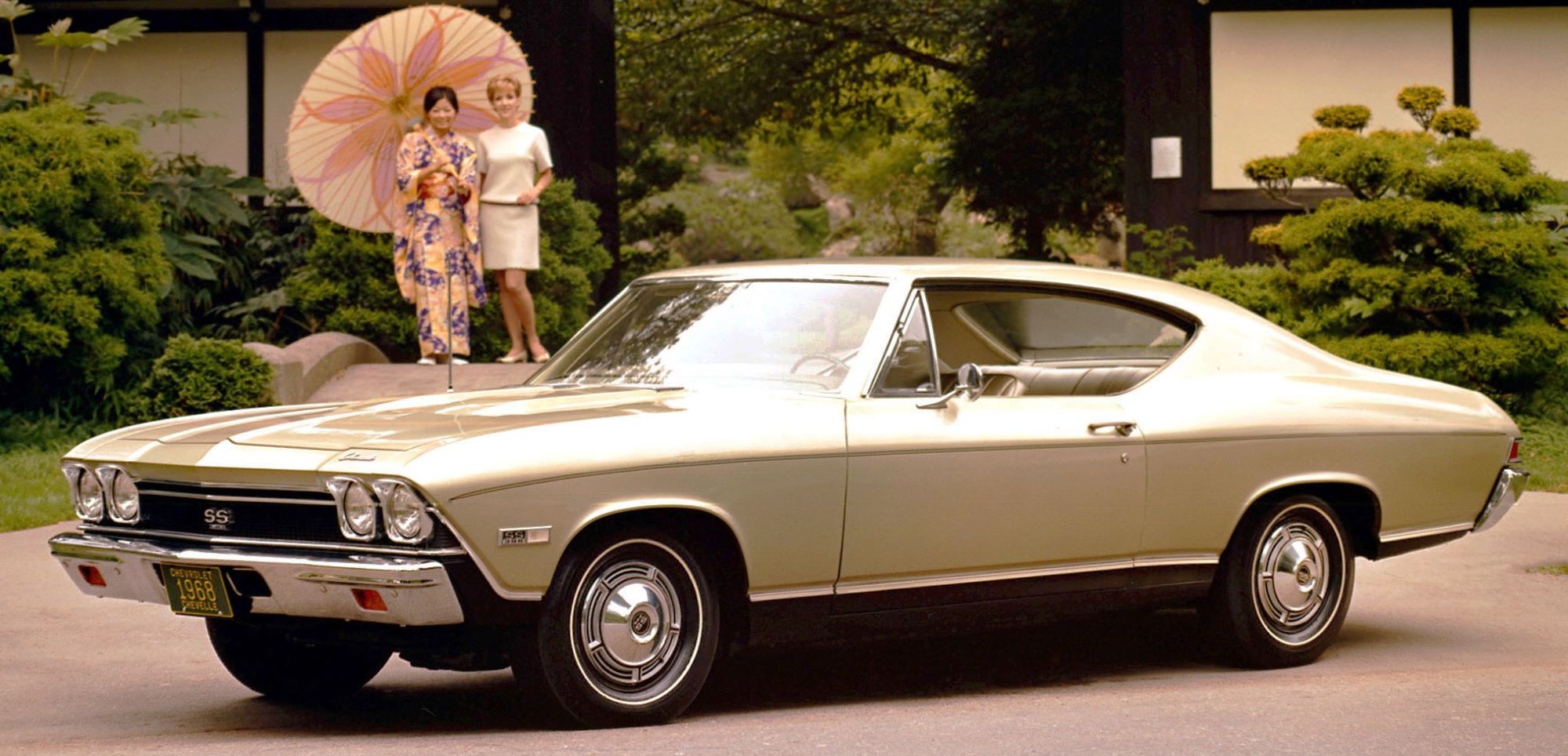
Generation 2 – 1968-1972
Based on the original intermediate platform, the 1968-72 models’ dimensions shifted with a slightly shorter 112-inch wheelbase for coupes and convertibles and a longer, 116-inch wheelbase for sedans and wagons. Like the 1964-67 models, each model year in the second generation had distinctive year-over-year styling differences.
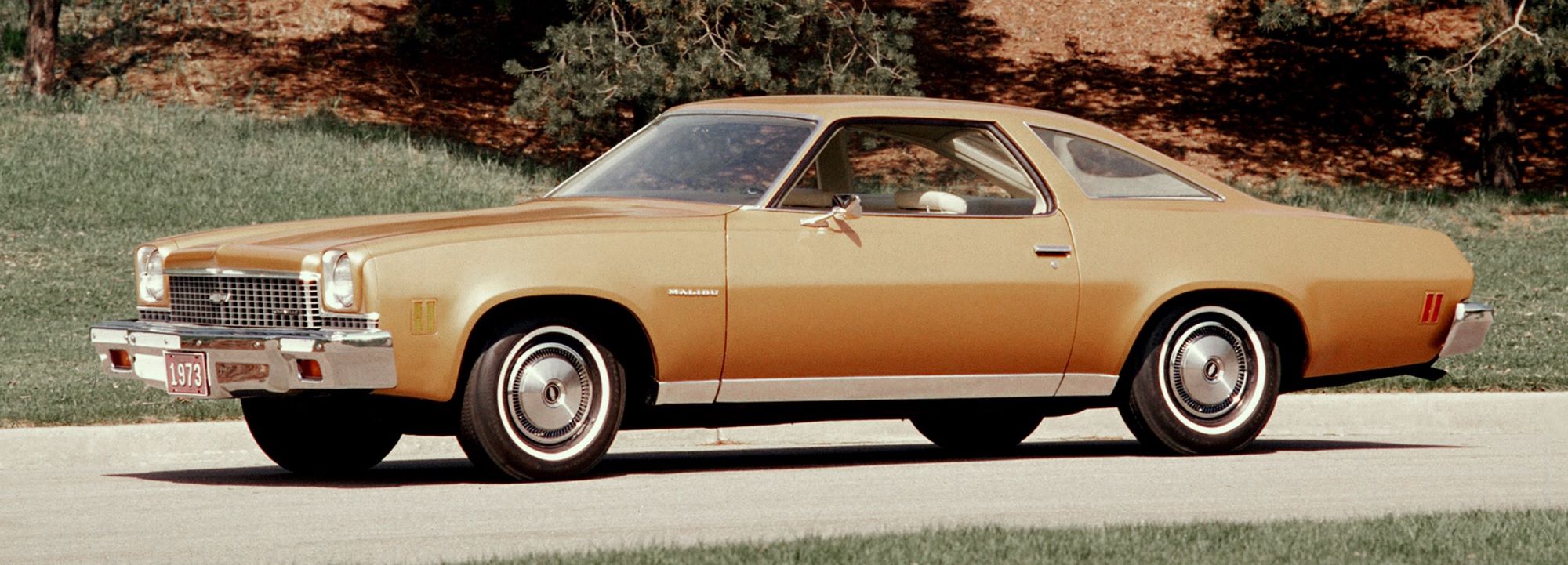
Generation 3 – 1973-1977
The 1973 introduction of the third-generation Malibu brought a new frame that retained the previous 112-/116-inch wheelbases, but to accommodate new federal crash standards, the bodies grew about five inches in length and one inch in width. A European-inspired Laguna model briefly dethroned the Malibu from its perch atop the midsize hierarchy.

Generation 4 – 1978-1983
Chevrolet discontinued the Chevelle line after 1977 and the next generation of downsized midsize cars would stick strictly with the Malibu name from 1978 onward. They were a foot shorter and more than 500 pounds lighter, offering V-6 and V-8 engines. There was even a dedicated police car package.
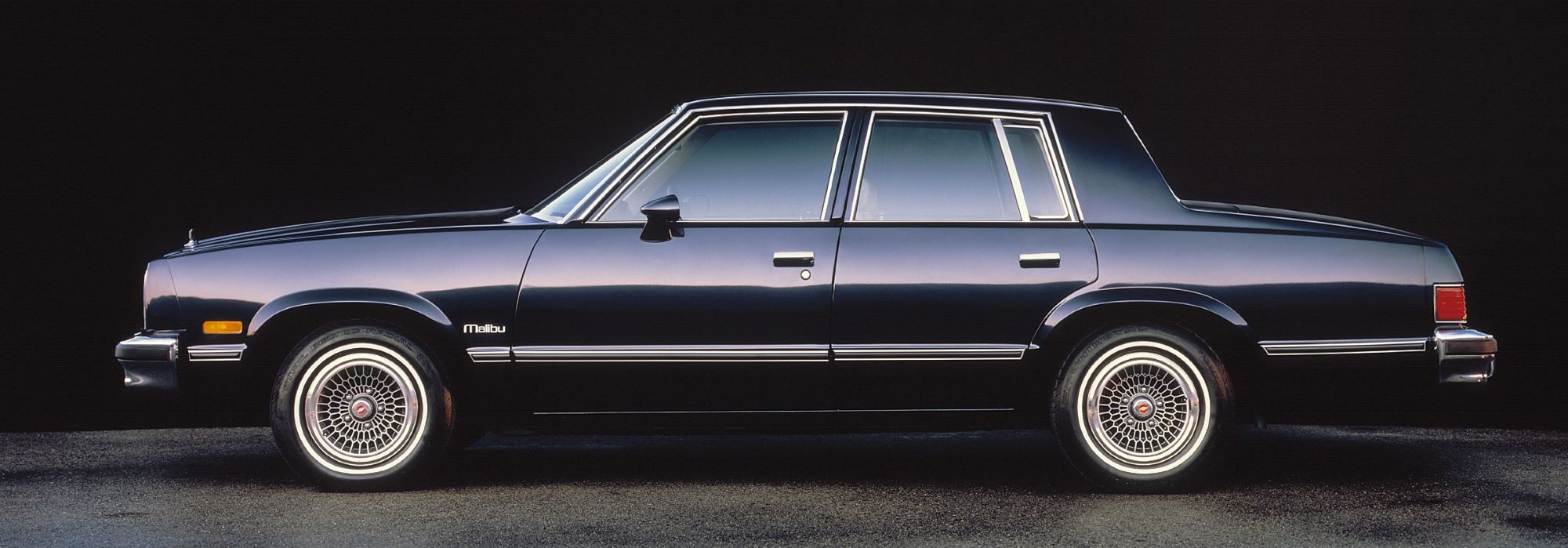
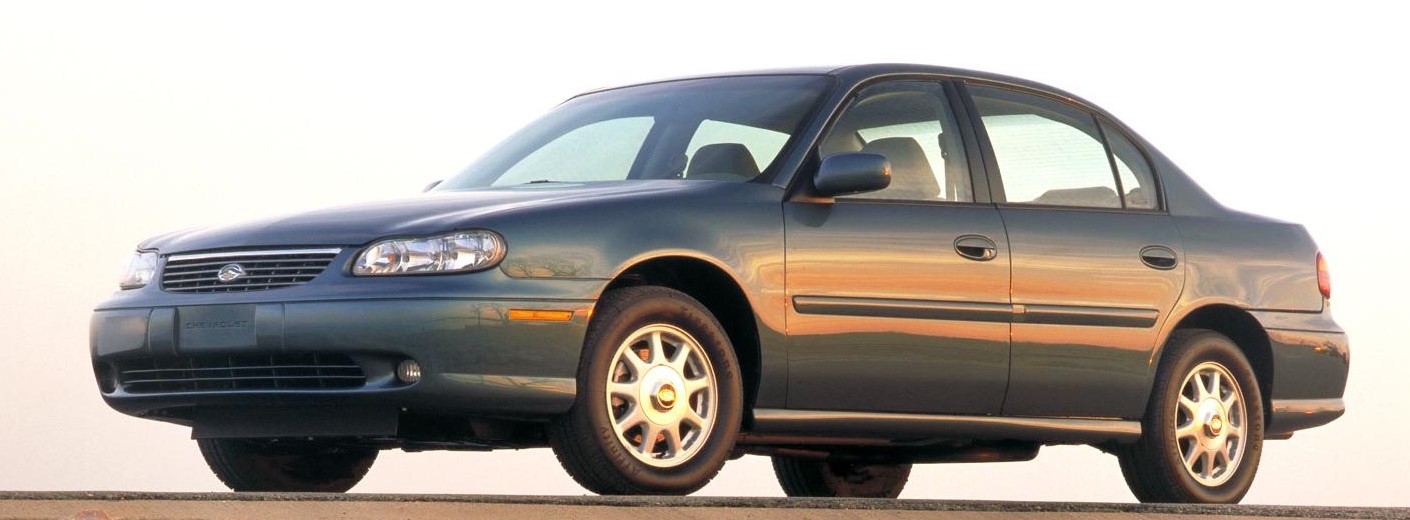
Generation 5 – 1997-2003
After a five-year run with the fourth generation, the sun set on Malibu from 1984 until 1997, when it was reborn as an all-new, front-wheel-drive sedan, offering four- and six-cylinder engines. It was named Motor Trend Car of the Year for 1997.
Generation 6 – 2004-2007
Generation 7 – 2008-2012
Generation 8 – 2013-2014
Malibu through the years
Named after the California city famous for its beaches, the 1964 Chevrolet Malibu was the top-line model of an all-new vehicle line touted as a premium choice for families that needed space and efficiency for long commutes.
Chevrolet called the Malibu an “intermediate” car – positioned between the full-size series and the compact Chevy II, It represented the birth of the mainstream midsize segment, which has grown to be the highest-volume segment in the industry. Customers snapped up more than 370,000 in the first year from a lineup that also included the entry-level 300 and Chevelle models, and a range of body styles that included coupes, sedans, wagons and convertibles. The lineup also included the Malibu SS muscle car.
Sales of Chevy’s upstart intermediate range topped 503,000 by 1969 – with the popular Malibu two-door sport coupe accounting for 300,000 of them.
Malibu rolled through the 1970s as one of the best-selling cars of the decade. It was retired in 1983, after its fourth generation. It returned in 1997 as a modern, front-drive sedan and was named Motor Trend Car of the Year. In the nearly 20 years since, it has evolved and offers the latest in efficiency-enhancing technologies, safety features and, more recently, the connectivity features that have become increasingly important to customers.

You must be logged in to post a comment.